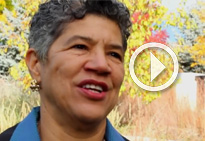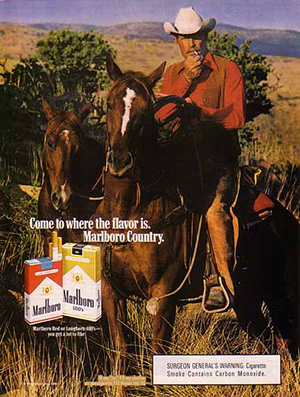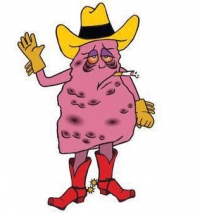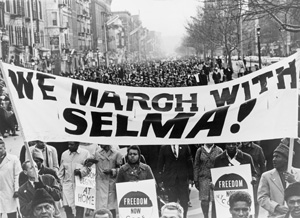
Leaders found that mixing outreach with education can create the critical mass of support needed to drive a social change.
 An Evolving Social Milieu
An Evolving Social Milieu
Last month, Darrell Winfred, a real life cowboy and the last of the Marlboro men, died, presumably of old age. However, Winfred’s iconic character rode into the sunset back in 1999 when anti-smoking campaigns snuffed him and Joe Camel out of advertising. These days they’ve been replaced by pictures of vascular disease, enforced by governments onto packs with macabre health warnings.
 The surgeon general recently reported that, “within this evolving social milieu, the population has given up smoking in increasing numbers. Nearly half of all living adults who ever smoked have quit.”
The surgeon general recently reported that, “within this evolving social milieu, the population has given up smoking in increasing numbers. Nearly half of all living adults who ever smoked have quit.”
Tobacco is a highly addictive substance with heavy economic backing, but anti-smoking interventions have a successful track record. They approach smoking as a public health issue and deal with the habit through a myriad of proven social messaging campaigns that counter big tobacco’s marketing ploys.  Last week Jon Oliver led a charge with #JeffWeCan on social media and his television show.
Last week Jon Oliver led a charge with #JeffWeCan on social media and his television show.
The Light of Human Conscience
The American Civil Rights movement’s use of nonviolent direct action, employed a similar brand of social messaging that defined racial inequality as a preventable disease.
"Like a boil that can never be cured as long as it is covered up but must be opened with all its pus-flowing ugliness to the natural medicines of air and light," wrote Dr. Martin Luther King Jr. from the Birmingham jail in 1963. "Injustice must likewise be exposed, with all of the tension its exposing creates, to the light of human conscience and the air of national opinion before it can be cured."
Leaders found that mixing outreach with education can create the critical mass of support needed to drive a social change.
My Little Piece
Drawing upon these lessons, Dr. Deborah Prothrow-Stith has spent her career shaping the way policymakers and the general public think about violence.
In 1981, Dr. Prothrow-Stith, began looking at ways to prevent youth violence by treating the issue as a public health problem, much like the anti-smoking campaigns have done. She began appearing on TV, radio, and in print to promote a public education strategy against violence. The curriculum that she developed is still used today by schools across the United States and abroad. Its adoption is a result of Dr. Prothrow-Stith’s efforts on multiple fronts.
“That work, when successful, is definitely multi-disciplinary,” said Dr. Prothrow-Stith. “It definitely involves the community. It kind of comes from the ground up and the top down.”
 In 1987, during her term as Massachusetts Commissioner of Public, she established the nation’s first Violence Prevention Office at a state health department. Soon after, her book, Deadly Consequences: How Violence Is Destroying Our Teenage Population and a Plan to Begin Solving the Problem inspired the 1990s sitcom Here and Now, and brought the issue to the attention of a mass audience.
In 1987, during her term as Massachusetts Commissioner of Public, she established the nation’s first Violence Prevention Office at a state health department. Soon after, her book, Deadly Consequences: How Violence Is Destroying Our Teenage Population and a Plan to Begin Solving the Problem inspired the 1990s sitcom Here and Now, and brought the issue to the attention of a mass audience.
“It's really building a movement and it's going to take time,” said Dr. Prothrow Stith. “It's going to take a lot of people and it's going to take my little piece.”
Some of society’s toughest issues like tobacco addiction and racial discrimination were once perceived to be intractable problems. Progress has been made in these areas, but make no doubt, there is still much work to be done. Smoking is still the leading cause of preventable death. The habit continues to kill 8 million people every year globally, even though the anti-smoking movement plays an influential role in making smokers decide quit.
 Events in Fergeson Missouri, New York City, and other places last year also remind us that there is still a strong need for a civil rights movement in the United States. This is the fiftieth anniversary of the marches from Selma to Montgomery, Alabama that led to the Voters Rights Act. Two years ago, the Supreme Court found the act unconstitutional. With no traction on amending the act since then, civil rights groups like the NAACP Legal Defensive Fund must continue to stay vigilant in order to push a new bill back on the table.
Events in Fergeson Missouri, New York City, and other places last year also remind us that there is still a strong need for a civil rights movement in the United States. This is the fiftieth anniversary of the marches from Selma to Montgomery, Alabama that led to the Voters Rights Act. Two years ago, the Supreme Court found the act unconstitutional. With no traction on amending the act since then, civil rights groups like the NAACP Legal Defensive Fund must continue to stay vigilant in order to push a new bill back on the table.
 Sustaining Change
Sustaining Change
The public health approach to social change does not happen overnight. Nevertheless, we have evidence today that these types of strategies are successful when we apply them to violence prevention. By treating youth violence as an epidemic, Dr. Prothrow-Stith has laid the groundwork for present-day groups such as Cure Violence in the United States. In the global arena, humanitarian groups like Adeso now address policy, encourage civil rights movements, and provide vocational training to stabilize fragile communities. Dr. Prothrow-Stith’s work continues to serve as a source of optimism and highlights the importance of social movements in sustaining change.
Article Details
Published
Topic
Program
Content Type
Opinion & Insights
